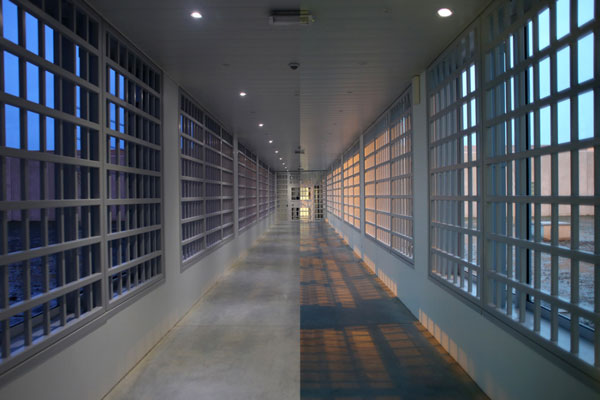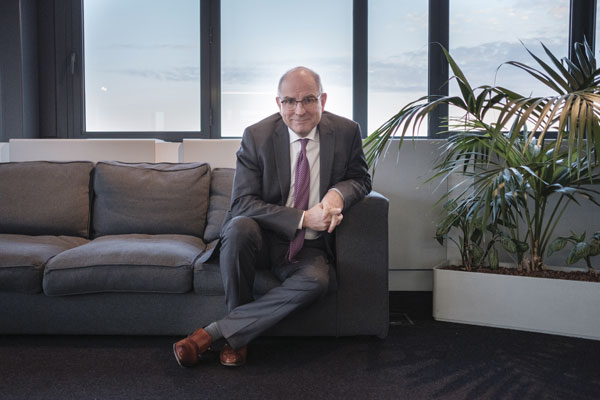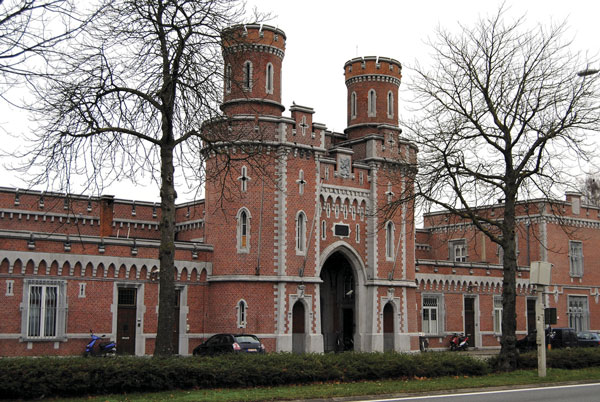// Interview: Koen Geens
Minister of Justice, Belgium
JT: In recent decades, the Belgian justice system has undergone many changes in the scope of reform efforts especially aiming at more flexibility and efficiency. In addition, a new master plan for prisons had the green light to move forward. As far as we know, this master plan envisages the construction of prisons but also investments in security, etc. Nevertheless, there’s been recent (February 2018) strikes of prison officers who complain about severe understaffing and the lack of career development.
Could you please explain, in more detail, what this master plan for prisons consists of, and the progress that has been made in implementing it, as well as the measures to deal with the lack of staff?
KG: The overall vision of the master plan is based on four pillars, namely, the construction of new prisons/expansion of existing prisons, the renovation of existing prisons, a differentiated detention policy with transition houses, and the “Master Plan Internment” entailing the adaptation of infrastructure to the needs of interned inmates.
Concerning the pillar of new prisons/expansion of existing prisons: new facilities have already been opened in Beveren, Leuze-en-Hainaut and Marche-en-Famenne. In addition, new prisons are planned in Dendermonde (444 places), Antwerp (440 places) and Haren (1190 places). With master plan III, additional prisons are to open in Leopoldsburg (312 places), in Vresse- sur-Semois (312 places), in Liège (312 places) and in Verviers (240 places).
The new facility in Liège serves as a replacement for part of the existing prison of Lantin, which is in such bad condition that it will have to be demolished. The prison in Verviers will be constructed on the grounds of the previous prison which closed in 2011 and was subsequently demolished because of irreparable damage to the architecture.
Low-security prisons will be more porous in their functioning with regard to the outside world (…) more room can be created for the normalisation of life, for a meaningful interpretation of incarceration, and for even more active work on reintegration.
As for the renovation of existing prisons, this specifically concerns the prison in Merksplas, which will accommodate 400 detainees with a specific profile (long-term and older inmates, and those with specific mental disorders). In both the new prisons that have already been built and the ones to be either built or extended, we must ensure that all the security requirements are guaranteed (especially in medium-to-high security facilities), but prisons with a lower security level are also a priority. These prisons will be more porous also in their functioning with regard to the outside world.
The same goes for the prisons in Leopoldsburg and Vresse- sur-Semois, and for the extra capacity that will be provided in the prisons in Jamioulx and Ruiselede, where 50 open regime places will be added. We believe that a substantial proportion of the inmates do not belong in higher security institutions and that it’s better that they serve their sentence in prisons where infrastructure and technical security are less prevalent.
Hence, more room can be created for the normalisation of life, for a meaningful interpretation of incarceration, and for even more active work on reintegration. In this context, an innovative project is underway using small-scale transition houses that are designed to give inmates (selected on the basis of a number of criteria) the chance to spend the last part of their sentence in an establishment that resembles daily life in society as close as possible. Small-scale and proximity are the pillars of detention centres that must make an inclusive execution of penitentiary sentences possible.
Oftentimes, our country has been criticised because people who have committed offences against a background of a psychiatric disorder and, as such, were not convicted in the classic sense, but to whom a measure of compulsory support and treatment was imposed, were housed among other inmates not suffering from mental health conditions. The absence of adequate care was also a point of many criticisms.
So, the Belgian government has radically taken a road that should lead to those people staying in appropriate care institutions. Hence, two forensic psychiatric centres have already been opened (one in Ghent with 264 places and another one in Antwerp with 182 places). Moreover, we have a specific master plan for Internment that entails the construction of three other forensic psychiatric centres (one in Flanders with 150 places, and two in Wallonia with 250 places each).
Hence, our Master Plan for Internment includes 860 extra places. In the end, therefore, all psychiatric internees will be assigned a place in a health care institution, and only a very limited number of them will be held in the psychiatric wards of prisons for a short period of time, where they will also be surrounded by a specialised care-squad. These care teams already exist, but they will be able to intensify their supervision in the future because only a limited number of internees will remain.
For all the projects that I have mentioned, working groups are getting started and they’re in different stages. For some establishments, the beginning of the construction is approaching; for others, the locations are being studied or the requirements and specifications are being written out. We expect the full implementation of the master plan to become a reality in the early years of the next decade.

Concerning the lack of staff, when I took office the current government indeed announced that budget cuts would be implemented in the public services. The prison system also had to deal with such cuts, but to a much lesser extent than other services, including other services within the Federal Public Service Justice. Rather than just undergoing these inevitable savings, we have chosen to seize the opportunity to optimise our resources.
The project “Working Differently” was therefore aimed at reorganising the work processes to the extent that the level of service could be maintained by using fewer resources. These analyses were carried out at the level of each prison, taking numerous variables into account (such as infrastructure, prison population and profiles, the prevailing regimes and other environmental factors) and in consultation with the prison staff’s unions.
This process was completed in mid-2017 and we are now fully in the implementation phase. This also means that recruitment takes place to fill in the remaining vacancies, and currently, the staff quota has been filled in for roughly 98.6%. In this way, the prison system does substantially better than most other government services.
There are also several commitments regarding career aspects of prison staff, and I am thinking, in particular, in a number of promotions. These result from an obligation towards the staff that I have committed to and that I follow closely. I notice that the penitentiary administration makes every effort to get these commitments effectively realised, so I am hopeful that the promises made will become a reality and that the prisons will be able to function at a normal level, which is already the case in the great majority of them.
We expect the full implementation of the master plan to become a reality in the early years of the next decade.
JT: Besides the construction of new prisons to alleviate overcrowding, is there anything else being done to reduce imprisonment, particularly at the level of developing non-custodial alternative sentences?
KG: I have taken initiatives to reduce the inflow of inmates by accelerating the flow through the detention process, and the outflow, for some specific categories of detainees.
Regarding the inflow, I did this initially by taking legislative initiatives that should provide the courts with a wider range of non-custodial sanctions. For example, electronic monitoring and probation were introduced as stand-alone sentences, whereas they were formerly only a foothold of sentences that began with imprisonment.
Electronic monitoring is also possible in the context of pre-trial detention. Previously, there was already the possibility of freedom under conditions in the context of pre-trial detention, but, with this alternative, more detainees receive their pre-trial detention without actually going to prison. This possibility has started somewhat slowly, but, currently, almost 8% of the people in pre-trial are in this system.
Moreover, if we don’t count the detainees in pre-trial detention who don’t have a residence permit (because this alternative is not applicable to those cases), then the proportion of people awaiting trial under electronic monitoring is almost 13%. International comparative research shows that this may closely resemble the ceiling that can be achieved.

Photo © Gil Plaquet
I have also taken initiatives to speed up the flow through the detention process of the inmates for whom the sentencing procedures are not decided by the court or the different modalities of the execution of sentences that fall under my competence. Hence, I shortened the admission date for provisional release for detainees convicted to short prison sentences of up to 3 years.
As a result, more detainees could be placed under electronic monitoring and prison sentences could be carried out more quickly.
Moreover, I introduced extended temporary leaves, meaning that those convicts who had already passed a successful block of three leaves could enter a rotating system of every other week of leave. This has led to those offenders being able to work more quickly and intensively on their social reintegration, and we have already noticed slight signs that they can submit a stronger rehabilitation file to the sentencing courts and can more easily transfer to a non-custodial sentence, more specifically via electronic monitoring.
I do not deny, nor am I deaf to, the criticisms of this measure, which say that it would compromise the credibility of the execution of sentences. However, I dare to assert that the counterproductive effects of confining offenders in prisons for a longer period, where in many cases they have to live in conditions that are no longer appropriate and also risk lacking sufficient guidance, do not outweigh the opportunities these measures offer them regarding their reintegration.
Finally, I’ve been working hard to remove as many psychiatric internees from our prisons as possible and to transfer them to forensic psychiatric centres or to the regular psychiatric care circuit. To this end, I have found a constructive partner in my colleague for Public Health.
The master plan that we already discussed, therefore, reinforces these objectives and its effects cannot be denied. Until a few years ago, more than 1,100 internees were being held in our prisons, but that number has dropped to just over 500. In cooperation with the State Secretary for Asylum and Migration, we have also optimised and advanced the transfer of foreign convicts without a residence permit and for whom an expulsion decision has been taken, in order not to unnecessarily stretch their custody.

JT: The Council of Europe’s Committee for the Prevention of Torture and Inhuman or Degrading Treatment or Punishment (CPT) calls for the improvement of prison conditions and for organised activities for the inmates. The response to the CPT’s report is to be made by summer 2018 (Source: CoE).
Will the implementation of your master plan solve the flaws pointed out by the CPT Committee, and will you be able to meet their recommendations in a timely manner?
KG: The implementation of the master plan obviously plays a decisive role. But even in the current prisons that are not included in it, a lot will have to be invested.
The complexity of the prison system is, of course, that ultimately everything is connected– if one pillar fails, other pillars regarding care, assistance and guidance to inmates get compromised. However, we are working without further delay with the department that manages the state property.
Concerning the organised activities for the inmates, that is a competence of the Belgian Communities’. Belgium is a constitutionally complex country– a fact which has its charms–, but the division of powers over the federal level and the regions has its cost, nonetheless, the competent services at the Communities are very active in our prisons and they are becoming more and more. So also, in that respect, I think we have taken the right path.
JT: What are the challenges that a high rate (more than 40%) of foreign prisoners poses to the system and how are you addressing such an issue?
KG: Apart from all the practical difficulties that this entails (such as the language barrier and different cultural habits), the main problem is ultimately the absence of probation perspectives. It is fundamentally different to deal with a detainee who can gain prospects of residence, work and guidance than with someone who is uncertain about his residence status or knows that he will have to leave the country.
Our ability to work with this group of the prison population tends to be very limited. I do notice that a project such as Foriner leads to foreign countries offering detour modules to their citizens who are imprisoned in Belgium, but that is obviously not a common good and many foreign nationals are therefore deprived of such services.
The risk that they are further isolated is therefore significant and our employees’ knowledge to correctly describe behaviour that can be perceived as incomprehensible or undesirable is still insufficiently present. In this respect, we will have to try to provide an answer to this issue through training modules.
JT: In 2015, you have launched an ‘Action Plan against Radicalisation in Prisons’. In practical terms, what has been being done to address violent radicalisation within Belgium’s prisons and to what extent has such a plan been successful?
KG: In March 2015, I did indeed develop an action plan about the approach to radicalisation in prisons that was built around ten action points. It would take us too long to cover them all, but in general, these action points were aimed at acquiring knowledge with regard to the presence of this phenomenon; promoting information sharing with other actors in the security chain; placement policy within the prisons; and cooperation with other actors who possess expertise or can contribute to deradicalisation or disengagement programmes.
From the recommendations of a parliamentary inquiry committee that was set up in response to the attacks of March 22nd, 2016, in the Brussels National Airport and in the Maalbeek metro station in Brussels, I conclude that we are on the right track with these action points. Not all ten have been fully realised, but based on the recommendations, we are currently working on version 2.0 of this action plan. Particular attention will have to be paid to the supervision and guidance of these specific inmates throughout their detention process, but more will have to be paid in the direction of their return to society.
At the time of drafting the action plan, all attention was logically focused on the effects of the massive arrival of radicals and extremists to our prisons, we are now in a phase in which many of them are being released from prison because they have reached the end of their sentence or are eligible for an early release.
So, we will have to consider the finality of our Deradex departments– where we currently hold prisoners who pose the most risk of indoctrinating or recruiting others. In light of the almost certainty that they too will leave the prison at some point, we will also have to focus and invest in offering reintegration guidance for these inmates or promote their return to an ordinary prison regime.
JT: The Belgian prison system has been a pioneer in the introduction of some advanced technological solutions for prisoners’ use: such as PrisonCloud, an IT platform that allows distribution of content and services to inmates.
The rationale of such a system is that the inmate is given full responsibility over his own life in prison and helps him to become an active and responsible actor during the whole detention process, playing a significant part in the normalisation process within prison because life in prison resembles life in society.
What is the state of development of the implementation of this type of ICT systems, what are the main results, and what is the feedback from prisoners and staff so far?
KG: Currently, three prisons have the digital platform PrisonCloud. The experiences are entirely positive to the extent that the demand to expand the availability of a digital platform is becoming bigger. The added value for the internal functioning of the prison is clear, as the inmates can take more autonomous initiatives to order food and items from the canteen, for example, or to request a meeting with the prison governor. This system also offers in-cell telephony services, which are very important for the inmate because he can choose the moment he wants to make a phone call.
The Belgian Communities focus on the development and offering of e-learning initiatives and, in that regard, they’re also asking for a rapid expansion. However, we are talking about an expensive operation. Currently, all prisons are wired so that telephony can be offered at every cell, and this infrastructure will also allow for the connection of digital platforms.
The prison administration is currently examining various possibilities for the expansion of the digital infrastructure and it will then be important to be able to acquire the budgets to expand the digital platform throughout the organisation. It may seem strange, but the fact that the prisoners’ self-sufficiency increases because they can control more aspects of their life in prison also increases the pressure to have more activities outside the cell.
It would absolutely be an undesirable side effect of prisons becoming more digital that the inmates would become even more isolated (from other inmates and staff) and would lose ground in terms of relational and communication skills. The introduction of digital platforms must, therefore, go hand in hand with strengthening the range of common activities.

JT: How do you envisage the future of the Belgian justice system, in general, and its correctional system in particular?
KG: I have a dream of an ideal world in which master plan III has been accomplished and we have contemporary facilities in which we can detain people in a humane way.
This automatically means that prison staff can perform their duties in equally contemporary working conditions and that all the energy that currently is put into problem-solving can be invested in a positive project, putting an end to the fatalism that is called “nothing works” in the prison.
There are days when I see that it is a bit gloomy because the road is still long and strewn with obstacles. Fortunately, there are more days that I am convinced that we can– and will– get there. And then, I feel the urge to also want to go along with that, along with the realization that that may not be in my hands.
//
His Excellency the Minister Koen Geens graduated in Law from the Catholic University of Leuven (KU Leuven, Belgium) in 1980, having obtained the highest distinction, then went to get his Master’s degree in Law from Harvard University (
USA, 1981) and returned to KU Leuven to obtain his Doctorate in Law. He has an extensive academic career at the Faculty of Legal Sciences of this University, where he currently holds the position of Extraordinary Professor. He also practiced law. In political terms, he was Belgium’s Minister of Finance between 2013 and 2014 and has become the Minister of Justice in October 2014.
Advertisement



